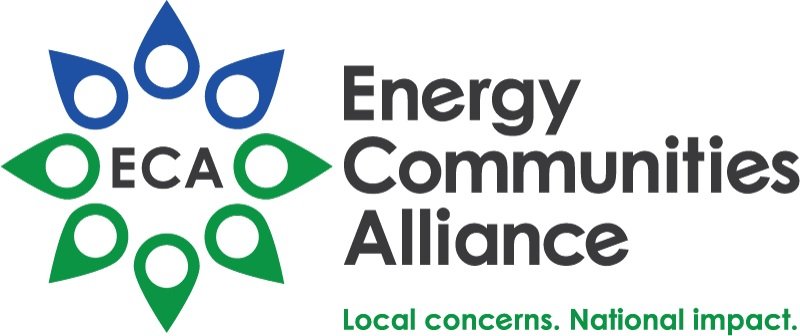PRESIDENT TRUMP SIGNS OFF ON THE BIG BEAUTIFUL BILL - WHAT'S IN STORE FOR NUCLEAR?
Last week, the Senate and House both passed H.R.1 – Big Beautiful Bill Act, which was signed into law by President Donald Trump on July 4. The Act will allocate a considerable amount of funding to initiatives for nuclear, in addition to modifying energy credits related to nuclear energy, and other measures that impact nuclear. See a breakdown of these initiatives and funding lines below:
Energy Credits Impacting Nuclear Energy
Nuclear Tax Credits – The Act includes provisions that would allow advanced nuclear projects to utilize the Production Tax Credit (45Y) and Investment Tax Credits (48E) once they have commenced construction:
Nuclear Power Production Credit (§ 45U) - Maintains the Nuclear Power Production Tax Credit (45U) through 2031 for existing nuclear reactors. Electricity produced by existing nuclear power plants is eligible for a credit equal to 0.3¢ per kWh or, if prevailing wage and apprenticeship requirements or exceptions in constructing, repairing, or altering the facility are met, 1.5¢ per kWh with the credit being reduced as power prices rise above $25 per MWh. Beginning in 2028, taxpayers must certify that any nuclear fuel they use was not sourced from “covered nations” or covered entities—unless acquired under a binding contract in force prior to January 1, 2023. In addition, OBBBA bars SFEs from claiming § 45U for tax years beginning after enactment and disqualifies FIEs from claiming § 45U for tax years beginning two years after enactment.
The bill would also create a new bonus for “Nuclear Communities”, defined as follows:
“…for purposes of any qualified facility which is an advanced nuclear facility, a metropolitan statistical area which has (or, at any time during the period beginning after December 31, 2009, had) 0.17 percent or greater direct employment related to the advancement of nuclear power, including employment related to—
‘(I) an advanced nuclear facility,
(II) advanced nuclear power research and development,
(III) nuclear fuel cycle research, development, or production, including mining, enrichment, manufacture, storage, disposal, or recycling of nuclear fuel, and
(IV) the manufacturing or assembly of components used in an advanced nuclear facility.’’
Extension of the Radiation Exposure Compensation Act Through 2028 – The Radiation Exposure Compensation Act, a program to compensate people for health care and other costs caused by atmospheric nuclear testing and uranium industry employment, was revived under the Act after expiring in June 2024. The extension represented a victory for Senator Josh Hawley (MO) and Senator Ben Ray Luján (NM), who spearheaded legislation to expand and extend RECA that passed by a 69-30 Senate vote last year, only to stall in the House reportedly due to concerns about its then-estimated $50 billion price tag.
The version included in the Act would extend and expand eligibility for residents exposed to and sickened by contamination in multiple states and raises the cap on their potential compensation to $100,000. It also covers uranium mine workers and allows residents in certain communities living near nuclear waste and production sites to be eligible for RECA compensation. The RECA is extended through Dec. 31, 2028.
Nuclear Defense/Deterrence
The Act will allocates $15,000,000,000 for modernization of the nuclear triad, including;
National Nuclear Security Administration (NNSA) Appropriations – Appropriations amount to additional funding totaling almost $4 billion for weapons modernization and other programs. This also includes funding for infrastructure modernization and fuel reprocessing. These amounts are in addition to annual appropriations. See a breakdown of NNSA funding below:
$200,000,000 to perform National Nuclear Security Administration Phase 1 studies
$540,000,000 to address deferred maintenance and repair needs of the National Nuclear Security Administration
$1,000,000,000 to accelerate the construction of National Nuclear Security Administration facilities
$400,000,000 to accelerate the development, procurement, and integration of the warhead for the nuclear-armed sea-launched cruise missile
$750,000,000 to accelerate primary capability modernization
$750,000,000 to accelerate secondary capability modernization
$120,000,000 to accelerate domestic uranium enrichment centrifuge deployment for defense purposes
$10,000,000 for evaluation of spent fuel reprocessing technology
$115,000,000 for accelerating nuclear national security missions through artificial intelligence
NNSA appropriations require the Agency to report on how it will use the funding allocated, which remains available to the Agency until 2029. Quarterly reports are due to Congress on the funding.
Department of Defense
$125,000,000 for the Department of Defense to enable the “acceleration of development of small, portable modular nuclear reactors for military use”.
$1,500,000,000 billion for expansion of production capacity for the B-21 bomber aircraft
$2,500,000,000 for risk reduction for the Sentinel Intercontinental Ballistic Missile Program
$2,000,000,000 for development of the nuclear armed sea-launched cruise missile
$65,000,000 to accelerate the modernization of nuclear command, control, and communications
$150,000,000 to accelerate the development, procurement, and integration of military nuclear weapons delivery programs
Using DOE National Lab Data for AI: - A late addition to the legislation would give the Energy Department $150,000,000 to “curate” the agency’s troves of scientific data for use in training artificial intelligence models.
The measure mobilizes the Energy Department's 17 National Laboratories “to partner with industry sectors” in the U.S. on the mission. The text did not mention which companies might be involved.
To read the full bill text, click here.
ECA will continue to provide updates on what these provisions and funding items mean for nuclear communities and nuclear energy.
